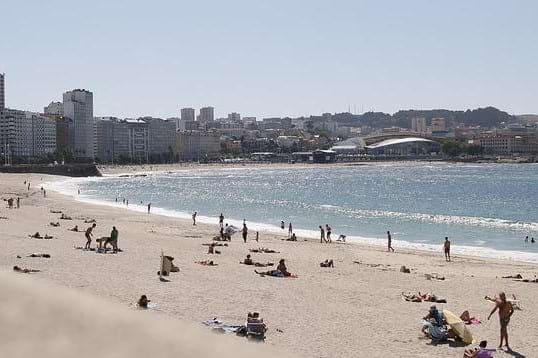Qué ver en Lugo
¡VISITA LUCUS AUGUSTI Y VIVE UNA GRAN EXPERIENCIA!

Lugo es una ciudad española situada en la comunidad autónoma de Galicia. Con casi 100.000 habitantes, es una de las localidades con más riqueza e historia de toda la península, remontándose su origen a los tiempos de los romanos.
¿Quieres visitar esta localidad? Pues te vamos a contar más sobre ella, la interesenta historia que esconde y sus lugares más emblemáticos.
Remontándonos al pasado: El origen e historia de la ciudad
La ciudad de Lugo fue fundada en el siglo I a. C. En concreto, Cayo Antistio Veto, legado de Octavio Augusto en las guerras cántabras, formó un campamento militar sobre un antiguo castro galaico en una posición estratégica clave. Sobre este campamento se fundó Lucus Augusti.
No te puedes ir de Lugo sin visitar...
La Muralla Romana de Lugo
Adéntrate en su muralla, que cuenta con nada más y nada menos 2300 metros de longitud. Una particularidad es que se conservan 71 de las 85 torres originales. Esas modificaciones son puertas como la Puerta de San Fernando, creadas para expandir la ciudad.
Fue construida para resguardar a la ciudad romana de Lucus Augusti, y se acabó de construir a finales del siglo III. En la actualidad, rodea el casco histórico de la ciudad y se integra a la perfección con el resto de la misma. Por ello, fue declarada Patrimonio de la Humanidad por la Unesco.

La increíble Catedral de Lugo, edificio románico del siglo XII
Al lado de la puerta de Santiago, una de las 10 puertas de la ya mencionada muralla, está la catedral. Construida en el siglo XII, es un edificio de estilo románico con planta de cruz latina, tres naves, crucero y girola, la cual tiene cinco capillas absidiales.
La nave principal tiene bóveda de cañón apuntado, mientras que las laterales tienen bóveda de cañón y arista. A la izquierda está situada la llamada Torre Vieja, de estilo gótico. Lo más llamativo es su interior, destacando el retablo mayor de Cornelis de Holanda y el coro, construido a principios del siglo XVII en la nave central, siendo la única catedral gallega que lo conserva.
Museo Universitario A Domus do Mitreo y su increíble excavación de la antigua Roma
Uno de los museos más emblemáticos de la ciudad es el Museo Universitario A Domus do Mitreo, situado junto a la muralla romana. El proyecto original era un edificio cultural, pero se localizaron los restos de una antigua domus romana que se usaba como mitreo (templo en honor a Mitra). Eso replanteó el proyecto, cambiando su nombre e integrando los restos conservados al nuevo edificio.
El edificio permite acceder a la excavación arqueológica, además de una exposición de algunas piezas encontradas en la misma. Las piezas son de época romana en su mayoría, aunque también hay alguna de época medieval.
Este Museo un claro reflejo de la evolución histórica de la ciudad.
Su Casa Consistorial del siglo XVI
Actualmente acoge al Ayuntamiento de Lugo, y es un edificio de estilo barroco. Fue construido en el siglo XVIII, para sustituir al anterior consistorio del siglo XVI. Eso sí, el edificio ha sido remodelado, con una nueva cubierta de la fachada en 1834, una ampliación de la sede en 1862 y la construcción de la torre del reloj en 1873.
Lo podrás encontrar en la Praza Maior, lugar que destaca por la escultura de los fundadores de la ciudad. Se trata de una obra que es símbolo del barroco civil gallego, donde destaca el gran escudo real que preside el ayuntamiento.

Iglesia de San Pedro, iglesia gótica y muestra de arte mudéjar
No podemos olvidar la gran historia católica de Lugo, especialmente durante la Edad Media. De esos años es la Iglesia de San Pedro, construida entre los siglos XIV y XV. De estilo gótico y arte mudéjar, es una iglesia con planta de cruz latina y estructura de madera con cuatro arcos torales. En los años 70, se descubrió una pequeña cripta con forma hexagonal que no había sido localizada anteriormente.
Este es un lugar de sepulcro de nobles como Rodrigo Alfonso de Saavedra o el conde Pedro Enríquez de Castilla. De la Sala Capitular solamente se conservan los arcos de ingreso. Lo que sí que se conserva es la capilla de la Venerable Orden Tercera, pero está cerrada al culto.
Museo Provincial de Lugo, antiguo convento de San Francisco
La ciudad tiene su propio Museo Provincial, el cual fue fundado en 1932. Antiguamente estaba situado en el Pazo de San Marcos, pero en la actualidad está en el antiguo convento de San Francisco.
Del antiguo convento se ha conservado el refectorio y la cocina del siglo XVIII y el claustro del siglo XV. El claustro es lo más interesante, ya que es uno de los pocos claustros franciscanos que se han conservado. Allí destacan sus piezas de arqueología de numerosas épocas, incluyendo la romana, la visigoda, la celta y otras de estilo barroco y gótico.
Termas romanas de Lucus Augusti
Una vez abandonamos las murallas de la ciudad, debemos dirigirnos a las orillas del rio Miño, para continuar disfrutando del patrimonio romano. Debido a sus orígenes, en Lugo se conserva bastante patrimonio de los tiempos de Roma. Un gran ejemplo de ellos son los restos de unas antiguas termas a orillas del río Miño, fundadas casi al mismo tiempo que la ciudad. En la actualidad, forman parte del Hotel Balneario de Lugo, que utiliza el mismo manantial de agua que utilizaban los romanos.
Declarado Bien de Interés Cultural, conserva gran parte de sus instalaciones originales. La mejor conservada es el vestuario o apodycterium, donde incluso se ve cómo los romanos utilizaban las homacinas de la pared para guardar sus enseres. También se puede visitar la antigua sala de baños, con zona para baños fríos y zona para baños calientes.
Puente romano de Lugo, el puente peatonal por excelencia
Muy cerca de las termas se sitúa el puente romano o puente viejo. Este puente cruza el río Miño por el suroeste de la ciudad, actuando como unión de la Calzada da Ponte con la carretera vieja de Santiago.
El puente, construido en época romana, fue restaurado a lo largo de la Edad Media, Edad Moderna y a finales del siglo XIX. En la actualidad, se utiliza como puente peatonal, ya que se construyó otro puente para que pasasen los barcos. Gracias a eso, se ha podido eliminar el asfalto, logrando un aspecto similar al puente romano original.
Templo romano de Santa Eulalia de Bóveda, templo de la diosa Cibeles
Otra de las obras romanas que se conservan en Lugo es el templo romano de Santa Eulalia de Bóveda, localizado a 14 km de la antigua Lucus Augusti y dedicado a la diosa Cibeles. Posteriormente, se convirtió en un lugar de culto a Santa Eulalia.
Construido en el siglo III, es un edificio único en todo el territorio del antiguo Imperio romano. Destaca su entrada con arco de herradura, sus dos columnas exteriores y su sala recubierta con bóveda de cañón. Aunque la planta superior ya no se conserva, la cripta está conservada casi en su forma original a excepción de la parte central de la bóveda. Eso sí, lo más desatcado es su pintura mural.


